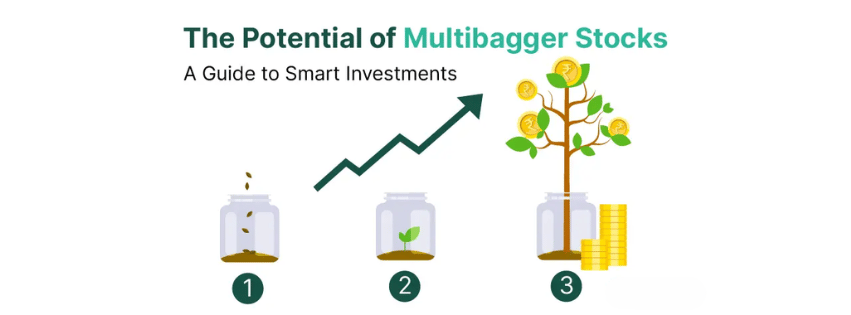- Finance by Tejas
- Posts
- Formula to Hold the Best Stock Performer
Formula to Hold the Best Stock Performer
The real formula for wealth? Sanity, not speculation.
Let’s face it—we all dream of spotting that one multibagger that skyrockets our portfolio into the stratosphere. That one stock that goes from “Huh, interesting...” to “Wait... how many zeroes is that?”
And why not? After all, the stuff of legends exists. One of them: Amazon.
Amazon has delivered an eye-popping 38% per annum for 23 years straight. If you’d invested ₹1 lakh back then, it would’ve grown into a mind-blowing ₹15.76 crores today.
Sounds magical, doesn’t it?

Well, here’s the heartbreak: almost no investor actually earned those returns.
Except Jeff Bezos, and maybe a few employees who got ESOPs and forgot about them. The rest? Most either exited too early, panicked during the dips, or never entered at all. Why?
Because Amazon’s journey was just as wild as its returns.
It had three drawdowns of more than 95%. Yes, you read that right. 95%. If you had invested in 2000, you would have waited eight long years in the red before seeing green.
Now tell me honestly: would you have held through that kind of pain? When your ₹1 lakh turned into ₹5,000? Would you still say, “No worries, long term mein dekhte hain”?
Probably not. And that’s perfectly normal.
So How Do You Actually Hold a Stock Like Amazon?
The honest answer? You probably don’t.
Not unless you work at the company or accidentally lose your password to the demat account.
That’s because there is no formula that tells you, this stock is going to be the next Amazon.
Wilhelm Roentgen, a physicist in Bavaria in the late 1800s, was experimenting with cathode rays. During one of his sessions, he noticed that a fluorescent screen—placed a little away from his experiment—began to glow even though he hadn’t expected it to. Curious, he realized this glow came from an unknown type of ray that could pass through skin and soft tissue but not through bones or metal.
This 'invisible light' fascinated him. It wasn’t part of his plan, and it wasn’t even something he was looking for. And yet, it turned out to be one of the most important medical breakthroughs in history - “X-Ray”. Within a year, hospitals across the world were using X-rays to locate bullet wounds, set broken bones, and diagnose internal injuries without surgery. Roentgen would go on to win the first Nobel Prize in Physics in 1901.
But here’s the key: he wasn’t looking to invent anything. He was curious, observant, and most importantly, open to unexpected outcomes.
And that’s what holding a 100-bagger feels like. You don’t “know.” You endure. You guess. You hope. You survive.
And that’s what holding a 100-bagger feels like. You don’t “know.” You endure. You guess. You hope. You survive.
The Real Strategy? Make Sense of What Makes Sense
Let’s come back to Earth. Most investors don’t need to chase unicorns. What we really need is compounding that doesn’t break our brains.
There are mutual funds that have delivered 18–25% CAGR over the last 10 years. These aren't speculative bets—they're managed equity schemes with past proven track records.
Here are those schemes:
Funds | 5 Yr Ret (%) | 10 Yr Ret (%) | 15 Yr Ret (%) |
DSP Small Cap Fund - | 32.10 | 17.04 | 18.27 |
Edelweiss Mid Cap Fund - | 32.24 | 17.51 | 18.73 |
Franklin India Small Cap Fund - | 34.36 | 16.28 | 18.24 |
HDFC Mid Cap Fund - | 32.20 | 17.71 | 18.88 |
ICICI Prudential Technology Fund | 25.90 | 17.49 | 18.38 |
Invesco India Mid Cap Fund | 30.53 | 17.77 | 18.76 |
Mirae Asset Large & Midcap Fund - | 22.73 | 17.02 | 19.68 |
Quant Small Cap Fund | 42.62 | 19.98 | 18.23 |
SBI Small Cap Fund | 28.86 | 18.50 | 20.36 |
For a fact, there are many of the schemes that may not have completed 10 year period or 15 year period, but they are promising and if they are able to generate compounded return of 15-25%, you have multibagger at your hand. There are schemes which invested in solid businesses with growing profits, expanding markets, consistent free cash flow.
Amazon wasn’t obvious in 2000. Heck, it wasn’t even profitable for decades.
But around 2013–14, it started to make sense to a wider crowd. And guess what? Even then, it went on to deliver 34% CAGR for the next 10 years.
You didn’t need to catch the first ₹1 lakh to ₹1 crore ride. You could still hop in at ₹1 crore and see it become ₹15 crore with way less stress.
If you chose to invest ₹1 crore right now and then it has potential to become ₹15 crore in 15 years with 20% compounded growth
The Key Is Sanity During Insanity
That’s where good advisors come in. Not to help you pick the next unicorn, but to keep you sane when markets go insane.
They help you:
Stay invested in what makes sense
Avoid the FOMO traps
Rebalance when needed
And sleep at night
Because long-term wealth isn’t built from hype or luck.
It’s built from discipline, clarity, and time.
So What Should You Do?
Stop looking for the next Amazon. That’s lightning in a bottle.
Start building a solid, diversified portfolio that you can understand and stick with.
Use tools like mutual funds, SIPs, and asset allocation to reduce risk and ride through volatility.
And most importantly:
Don’t be harsh on yourself. Even Warren Buffett—a die-hard fan of Jeff Bezos—never invested in Amazon. And he’s still the greatest investor alive.
So next time someone says, “I’m hunting for the next multibagger,” just smile and say:
“I’m building wealth—with my eyes open, not crossed fingers.”
Warm regards,
Tejas Lakhani